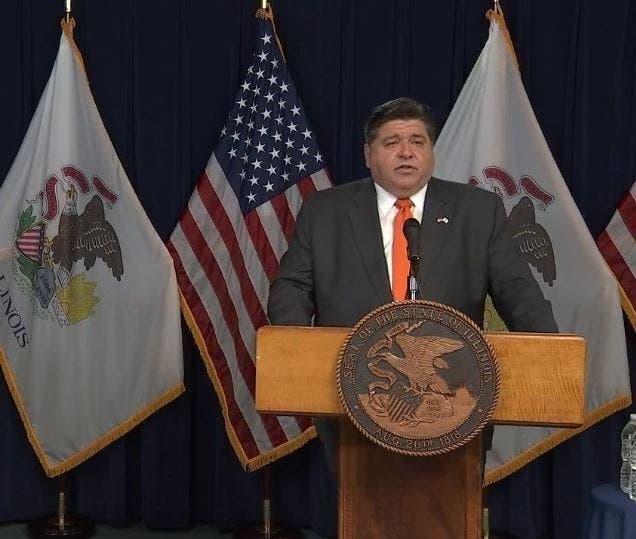Politics & Government
'Troubling' Coronavirus Trends In Illinois: Pritzker
Positivity rates are climbing in seven of Illinois' 11 regions, Gov. Pritzker said, warning state officials "won't hesitate" to step in.

ILLINOIS — Gov. J.B. Pritzker on Wednesday warned that officials are seeing “troubling trends” in coronavirus data being reported in a majority of the state’s 11 emergency management regions, especially Region 7 — Will and Kankakee counties — and Region 5 — Southern Illinois.
Over the past week, positivity rates climbed in seven regions — 2, 3, 4, 8, 9, 10 and 11 — and just three regions reported decreases in their 7-day rolling average positivity rates, Pritzker said.
Find out what's happening in Across Illinoiswith free, real-time updates from Patch.
Between Aug. 7 and Aug. 16, the 7-day rolling average positivity rate rose in six of the regions Pritzker mentioned, according to statistics from the Illinois Department of Public Health. However, the positivity rate in Chicago (Region 11) remained at 5.3 percent over that 10-day period, despite three days of rate increases.
IL Breaks 2,000 New Coronavirus Cases For 4th Time Since May
Find out what's happening in Across Illinoiswith free, real-time updates from Patch.
As of Sunday, the 7-day rolling average positivity rate in Region 7 was 7.2 percent, while Region 5’s positivity rate was 7.1 percent, within one percentage point of the IDPH’s threshold for new restrictions.
Pritzker on Wednesday again emphasized that state officials “won’t hesitate” to tighten restrictions, as they did in Region 4 over the weekend, if cases continue to surge past the state’s benchmarks.
According to Illinois' new mitigation plans, regions face new restrictions on businesses and activities if they record positivity rates of more than 8 percent for three consecutive days, as occurred in Region 4.
New Coronavirus Restrictions For Metro East As IL Cases Surge
Under the new mitigation strategies implement by state officials, restaurants and bars in Region 4 must close at 11 p.m. — the same time establishments in St. Louis are closing — and reservations are required. Social gatherings are being limited to 25 people or 25 percent of a facility’s capacity, whichever is smaller.
The positivity rate in Region 4, as of Sunday, was 9.5 percent, according to IDPH data.
Deadline Extended For Illinois’ Coronavirus Rent Relief Program
Pritzker said state and local officials will work together over the coming weeks to determine if more restrictions are required to slow the spread of the coronavirus. If the region’s positivity rate remains above 8 percent — as it has since Aug. 11 — the state could step in, Pritzker said.
Public health officials have also said they will implement new restrictions if a region reports daily positivity-rate increases seven times within 10 days, along with an increase in hospital admissions due to coronavirus-related symptoms or a drop in capacity in intensive care units.
Region 2, Illinois' North Central region, is also close to triggering new restrictions after officials reported positivity-rate increases in six of the past 10 days, the state's data shows.
Positivity rate increases from Aug. 7 to Aug. 16:
Region 1 — 4.7 percent to 3.8 percent; 2 daily increases
Region 2 — 5.3 percent to 5.5 percent; 6 increases
Region 3 — 5.4 percent to 6.1 percent; 5 increases
Region 4 — 7.3 percent to 9.5 percent; 9 increases
Region 5 — 7.1 percent to 7.1 percent; 4 increases
Region 6 — 3 percent to 2.2 percent; 1 increase
Region 7 — 6.6 percent to 7.2 percent; 5 increases
Region 8 — 4.6 percent to 5.1 percent; 4 increases
Region 9 — 5.5 percent to 5.6 percent; 4 increases
Region 10 — 5.8 percent to 6.4 percent; 4 increases
Region 11 — 5.1 percent to 5.1 percent; 3 increases
RECENT NEWS:
Get more local news delivered straight to your inbox. Sign up for free Patch newsletters and alerts.